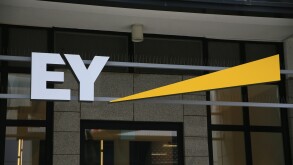Article 54.1 of the Tax Code of the Russian Federation has proven highly controversial. Recent statistics show that taxpayers only won 75 cases (out of 1,013) and had claims upheld in part in 140 cases. On March 10 2021, the Federal Tax Service (FTS) issued Letter No. BV-4-7/3060@ to clarify how the article should be applied.
The Letter states that previous approaches to settling unjustified tax benefit disputes still apply under Article 54.1. In addition, the state budget must be suffering a ‘damage’, and the actual tax liability of a taxpayer in a tax audit must be calculated (via tax reconstruction, inter alia, by accounting the taxes paid under the simplified tax regime when splitting business cases are considered). The notion of due care and diligence is restated as a precondition for a taxpayer to be relieved from tax claims.
However, key questions remain.
For example, clause 20. If a taxpayer did not know and should not have known of the counterparty’s ‘technical’ nature, with work actually executed by another entity, then no tax claims are made against the taxpayer. This means it can account for expenses and VAT deductions in full using the documents provided by its counterparty. This is clearly desirable for taxpayers.
If not, tax reconstruction may be potentially applied. However, tax reconstruction opportunities are limited, and greatly depend on the subjective view of the tax authorities. They assess whether a taxpayer acted intentionally, whether it knew of the counterparty’s ‘technical’ nature, or whether the taxpayer should have known. The authorities also try to identify the actual executor of the deal – easier said than done.
Finally, for tax reconstruction, only those taxes of identifiable third parties, supported by documentation, can be accounted. Otherwise (with one exception), the entire amount (including VAT deductions), will be regarded as ‘damage’ to the state budget, and tax reconstruction will be denied.
Thus, taxpayers need to know how they can identify ‘technical’ companies and the ‘actual executor’.
A ‘technical’ company
Clause 4 of the Letter explains the term ‘technical company’. It states that a technical company does not conduct business or pay tax on transactions made on its behalf, does not engage in business for its own benefit and at its own risk, does not have the necessary assets to run a business, does not perform any actual functions, or does not assume the status of a party to a transaction, instead executing documents to the benefit of others for unlawful purposes.
Taxpayers are expected to – at their own expense, and with limited resources – identify these firms. If the tax authorities identify ‘a critical totality’ (how is that defined?) of evidence that one of the taxpayer’s counterparties is a ‘technical’ company, clause 13 condemns the taxpayer as guilty.
Thus taxpayers, desirous of obeying the FTS, find they lack the ability to identify ‘technical’ companies, whereas the FTS has the full resources of the state at its disposal.
The actual executor
Article 54.1, clause 2, paragraph 2, requires that contracts be fulfilled by those party to the contracts (or to whom responsibility has been legally transferred). This is vague and lacks precedent in existing law, yet is the key condition for taxpayers to recognise expenses and claim VAT refunds.
Yet in what circumstances will the tax authorities conclude that a contract was fulfilled by an inappropriate entity? ‘Legal entity’ is itself a legal fiction – what does ‘actual fulfilment’ mean? How are facts of fulfilment obtained? Do daily records and rosters of those fulfilling the contract need to be kept? Is this, in reality, practical?
In the 2016 Centrregionugol case, coal was delivered by rail from a mine to the buyer. Intermediates resold the coal down the contractual chain. But who was the ‘actual executor’? The mine, producing the coal? Russian Railways, whose locomotives and track facilitated the coal’s journey? The owner of the rolling stock that carried the coal? Or the seller with whom the buyer signed a contract?
Identifying the actual executor is difficult, yet this identification is vital for the tax fate of the deal. How can taxpayers track all contracts in long supply chains, or make sure each entity is recording its accounts properly?
An answer of sorts, concerning ‘subcontractors’ and not ‘actual executors’, came in the SPTB Zvezdochka case. The Supreme Court ruled that a fulfilling entity, liable to the client, must have sufficient resources, or be able to contractually obtain sufficient resources from subcontractors, to meet the client’s demands.
To summarise, the Letter of the FTS is a good first step in the right direction, and the FTS – in particular, deputy head Viktor Batsiev – understands modifications will be required.
Key is the aspiration of the FTS to be clear, build trust, help taxpayers, and find a balance between state revenues and taxpayer profit. Taxpayers should ensure they commit themselves to working with the FTS to bolster this progress.
Stanislav Denisenko
Director, KPMG Russia












